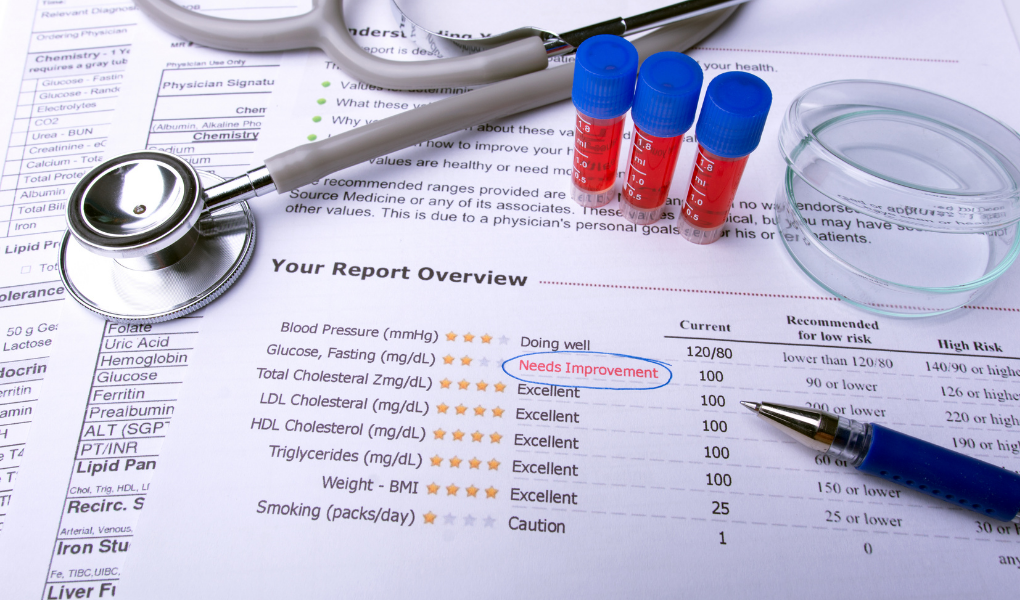Anemia Hub

Equity in Diagnostic Testing Overview
Disparities in anemia present themselves as Blacks are three times more likely to be diagnosed than their white counterparts. Equity in diagnostic testing is crucial in detecting and treating anemia**.
Key tests in anemia include:
-
-
-
General Details of Digital Diagnostic Approaches
Digital diagnostics in healthcare is a blossoming area that covers a wide variety of diagnostic tests and analysis that continues to expand in new ways. In fact, digital diagnostics can include blood tests, biopsies, imaging, genetic testing, and remote monitoring of vital signs and organ function. Artificial intelligence (AI) is increasingly being used to process and analyze digital diagnostic testing, which generates multiple benefits of reducing the percentage of errors in test results, decreasing some tedious test interpretation tasks, and increasing face-to-face time for patients with their healthcare professionals. In addition, expanding the use of digital diagnostics can help create more equitable care for marginalized patients both in the U.S. and around the world.
Disparities of Digital Diagnostic Approaches
Some medical research studies have analyzed the link between diagnostic errors and health care disparities. One example of these studies includes increased likelihood of misdiagnosis using genetic testing with patient diagnostic tools that were created with less diverse patient populations. Another example includes a research study that concluded that Black patients were more likely to be underdiagnosed with depression compared to their white counterparts in cases when they visited their primary care clinics for mental health concerns.
Why This Matters
Diagnostic errors that lead to underdiagnosis and misdiagnosis of patient conditions may lead to reduced quality of life and even higher death rates for some conditions. Standardized digital diagnostic approaches can be a powerful tool in moving toward equitable medical diagnostic testing and care for all. As diagnostic data for all patient populations becomes more readily available, analysis and, in turn, patient diagnosis and care will become more refined for improved care no matter patient gender, geographic location, socioeconomic status, or racial or ethnic background. A wide range of medical conditions can benefit from more timely and accurate diagnosis including conditions such as lung cancer, breast cancer, genetic abnormalities discovered during prenatal care, and heart defects and conditions.
Call to Action
Digital diagnostic approaches are essential for moving toward equitable care for all patients. Any patient advocates who want to advocate for improved care can write to their congresspeople to support standardized diagnostic testing for all. During your next visit to your healthcare professional, ask them how digital diagnostics are assisting them in patient care.
Brooke Whitaker, DCLS, MLS(ASCP)cm is a doctor of clinical laboratory science. You can find her on Twitter: @BrookeW74021416
-
-
General Details of Hemoglobinopathy Evaluation
The hemoglobinopathy evaluation is a test used to check for inherited blood disorders that create abnormal forms of hemoglobin, or hemoglobin variants. All states in the U.S. require hemoglobinopathy screening for thalassemia and sickle cell disease in newborn babies.. In addition, abnormal results on a blood smear or complete blood count (CBC) might trigger your healthcare professional to order a hemoglobinopathy evaluation. Some common hemoglobin variants that are discovered by the evaluation include hemoglobin C, hemoglobin E, and hemoglobin S. Hemoglobinopathy evaluation checks for various hemoglobinopathy conditions including sickle cell disease, thalassemia, and hemolytic anemia among others. Some symptoms of hemolytic anemia include pale skin, yellowing or jaundice of the skin, lack of energy, fatigue, and weakness. No special preparation by the patient is needed before the blood sample for the evaluation is taken, and blood is normally taken either from the heel of a foot in small infants or from a finger.
Disparities of Hemoglobinopathy Evaluation
A global study of sickle cell disease (SCD) and thalassemia patients looked at the impact on health-related quality of life, including pain-related events in SCD patients and transfusions for thalassemia patients. The study results showed that the characteristics of the healthcare systems had a direct impact on health-related quality of life, and this impact was especially noticeable in low-income countries. Researchers who performed the study recommended that healthcare plans take the study results into consideration in the function of healthcare plans.
Why This Matters
Medical conditions of hemoglobinopathy must be considered to strive for optimal quality of life for all patients. Sickle cell disease and thalassemia patients have health-related quality of life concerns of pain events and transfusions, respectively. These concerns must be considered in the function of healthcare plans both for patients who have been diagnosed and in giving hemoglobinopathy evaluations to newborn babies. If these conditions are diagnosed in newborns, more steps can be taken to take preventive steps to maintain health for improved quality of life and health outcomes.
Call to Action
If you are an expectant mother or a patient with a family history or have symptoms that might be related to a hemoglobinopathy, make sure to ask your doctor or other healthcare professional when a hemoglobinopathy evaluation can be performed for you or your baby. Sickle cell disease and thalassemia screening is required in all U.S. states, and it is screening that all healthcare systems around the globe should strive for to improve care for all patients. Ask your healthcare professional if you have additional questions about the hemoglobinopathy evaluation.
Brooke Whitaker, DCLS, MLS(ASCP)cm is a doctor of clinical laboratory science. You can find her on Twitter: @BrookeW74021416
-
Programs

Resources

Designed with health equity in mind, HubKits are packed with expert knowledge that give you the information necessary to confidently share in decision-making with their health care providers. Download a HubKit to equip yourself for an equitable conversation with your care team.
Have feedback for us?
Are there topics you'd like us to cover? How can we better help you?.
Sources
Chi Huu Hong Le. The Prevalence of Anemia and Moderate-Severe Anemia in the US Population (NHANES 2003-2012). National Library of Medicine website. Accessed March 16, 2023. https://www.ncbi.nlm.nih.gov/pmc/articles/PMC5112924/#:~:text=Another%20potential%20risk%20factor%20is,than%20in%20Whites%20%5B14%5D
Lauren Shevell, Suman L Sood. Racial Disparities in Screening and Management of Anemia Among Pregnant Women. Blood website. Accessed March 16, 2023. https://ashpublications.org/blood/article/140/Supplement%201/7979/490552/Racial-Disparities-in-Screening-and-Management-of
Anemia. Mayo Clinic website. Accessed March 16, 2023. https://www.mayoclinic.org/diseases-conditions/anemia/diagnosis-treatment/drc-20351366#:~:text=Complete%20blood%20count%20(CBC).,the%20hemoglobin%20in%20your%20blood
Hemoglobinopathy Evaluation. Testing.com website. Accessed July 21, 2023. https://www.testing.com/tests/hemoglobinopathy-evaluation/
Francesca Rodigari, Georgia Brugnera, Raffaela Colombatti. Health-related quality of life in hemoglobinopathies: A systematic review from a global perspective. Front Pediatr. National Library of Medicine website. Accessed July 21, 2023. https://www.ncbi.nlm.nih.gov/pmc/articles/PMC9452907/


































